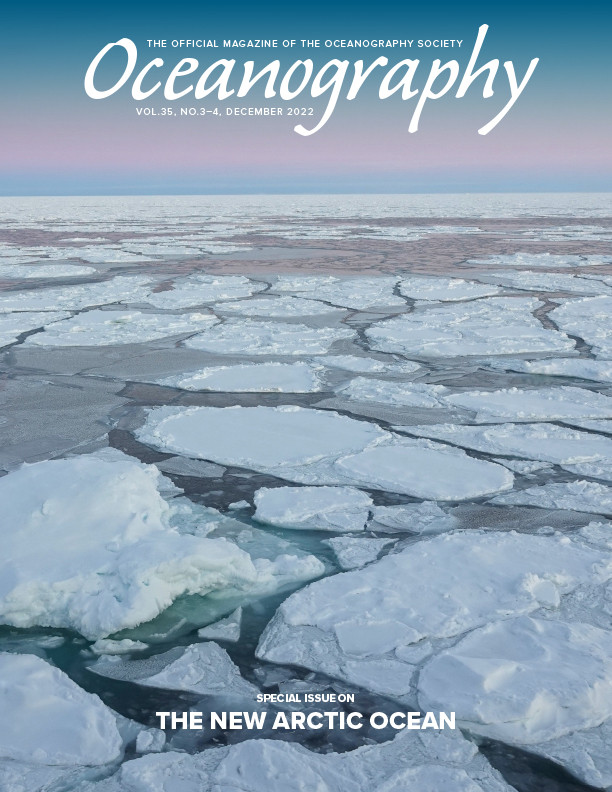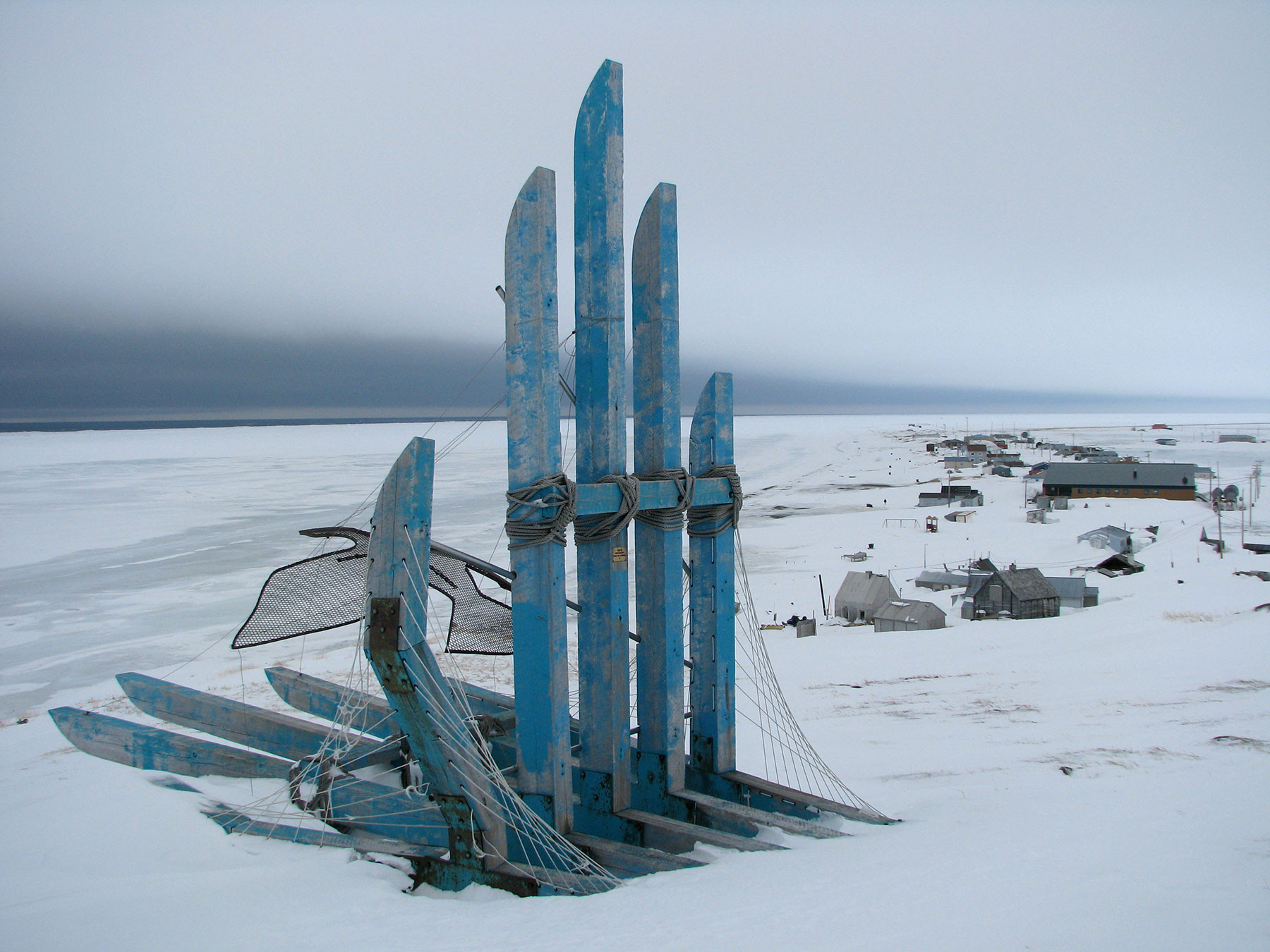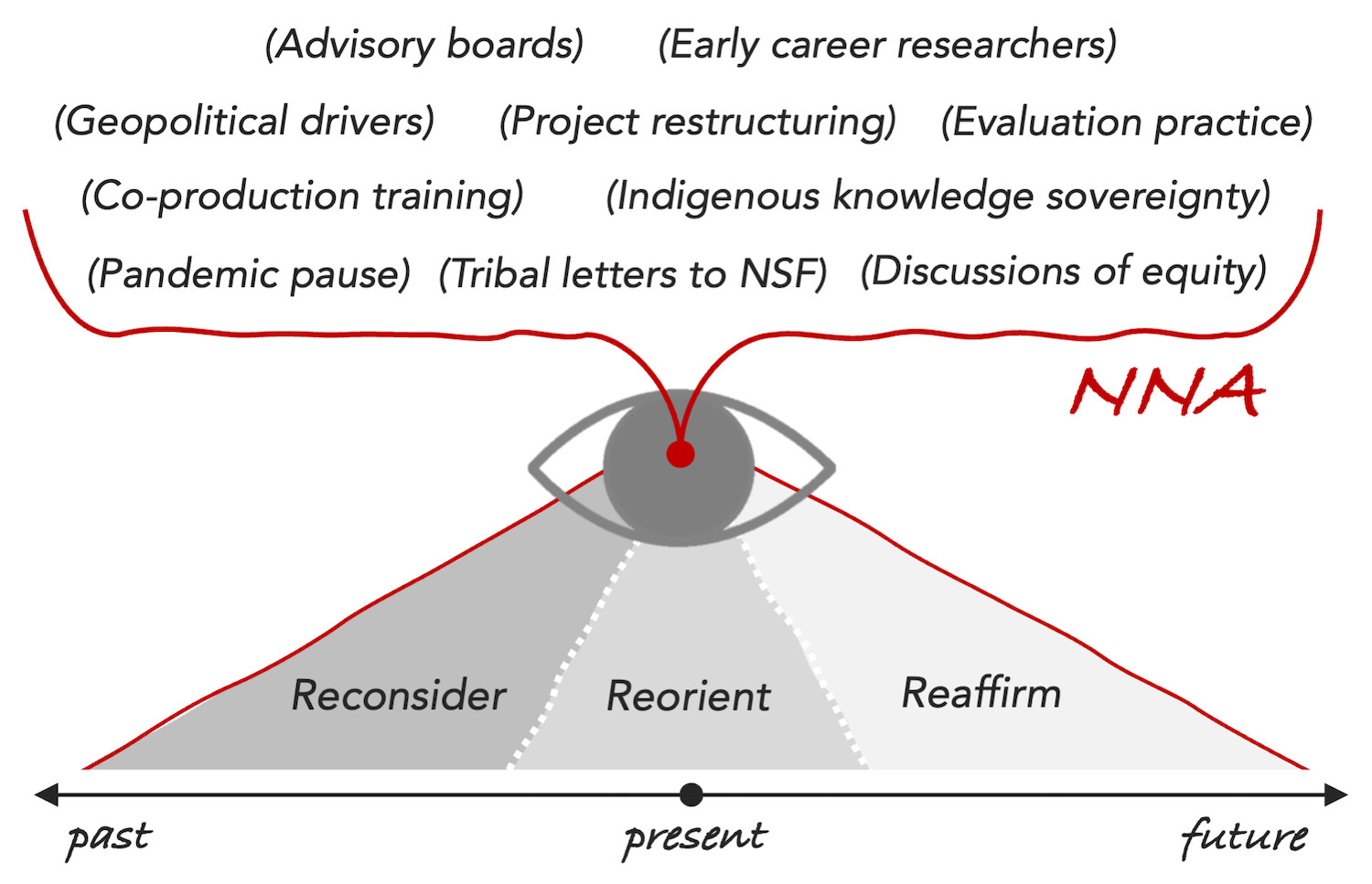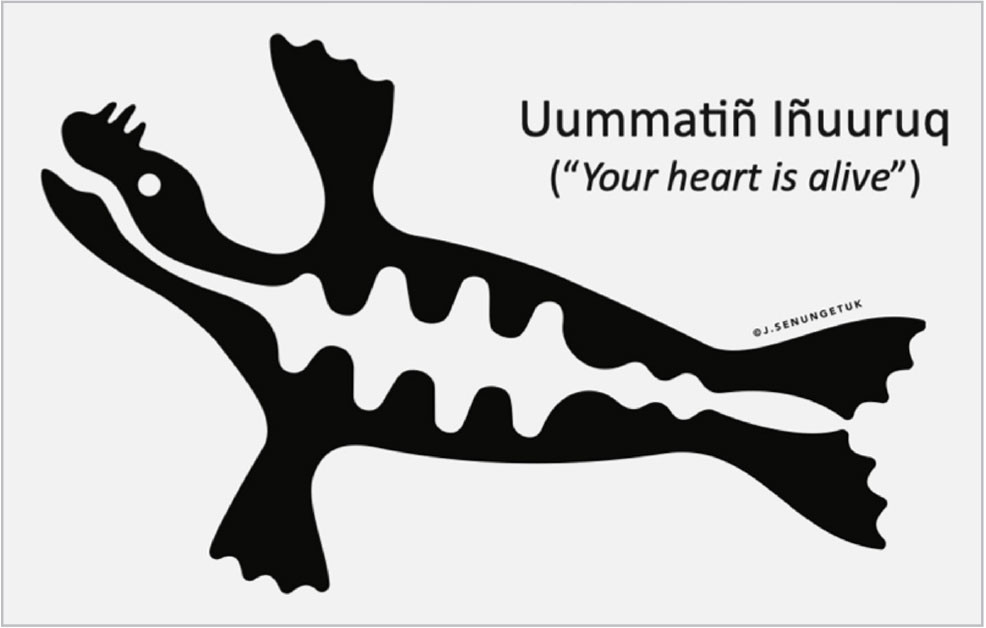Full Text
In 2016, the National Science Foundation (NSF) identified 10 “Big Ideas” for advancing science and engineering research and guiding long-term US research investments. Navigating the New Arctic (NNA) was one of those big ideas, highlighting NSF’s continued commitment to funding research to help societies respond to a warming Arctic. NNA focuses on convergence—collaborations formed from deep integration across disciplines and knowledge systems to address vexing and complex research challenges that are pivotal for meeting societal needs (Wilson, 2019). The NNA initiative has funded over 100 individual and collaborative research projects since 2017, addressing topics ranging from thawing permafrost, to shifting weather patterns, increasing shipping, and adapting food systems. Research teams funded by NNA to work across the Arctic are composed of scientists from diverse disciplines, Indigenous knowledge holders, practitioners, planners, and engineers.
Many NNA projects also emphasize co-production of knowledge—a collaborative and inclusive process that brings together Indigenous knowledge and science in a holistic view to generate new understandings for addressing research, policy, and management interests (Yua et al., 2022). Co-production of knowledge is not new; it has had a long history in Arctic research. However, today there is heightened attention to the systematic changes needed to make the process equitable across all stages of research, from initial conceptualization and design to the sharing and application of the information and knowledge that is generated.
The focuses on convergence and co-production go hand-in-hand; seeking sustainable science-based solutions for addressing real-world, rapid changes across the Arctic requires working closely with Arctic peoples. They are the residents, rightsholders, and original knowledge keepers and stewards of the Arctic. Such collaborative research is extremely challenging, taking place at the interface of diverse cultures, institutions, knowledge systems, and values. NNA has laid bare the complexity of co-production and the challenges associated with balancing, on the one hand, convergence research being led by largely university-based academic scientists and, on the other, the interests of Arctic communities who are addressing the systemic, day-to-day challenges of climate change, while also fighting for self-determination.
COMMUNITY CONCERNS AND GLOBAL CHALLENGES
In March 2020, tribal organizations from the Bering Sea region of Alaska (Bahnke et al., 2020) delivered a letter to NSF addressing a range of concerns about the NNA initiative. Some concerns related to researchers directly, for example, their invitations to Indigenous communities to participate in proposed projects with little lead time to plan for meaningful involvement, as well as researchers seeming to lack training and understanding in co-production research. Additional concerns were more at the scale of the initiative itself, highlighting that funded research was often geographically concentrated, leaving some climate-threatened regions largely unaddressed. In general, there is recognition that NSF miscalculated the extent that Arctic researchers lacked fundamental understanding of what co-production of knowledge means and looks like in practice (Stone, 2020).
When the onslaught of the COVID-19 pandemic disrupted scientific research globally in the winter of 2020, NNA researchers were forced to cease or greatly limit travel and in-person collaboration. This took a high toll on those projects at the early stages of building partnerships with Arctic communities. Then, in early 2022, the Russian invasion of Ukraine swiftly brought new geopolitical realities to international research in the Arctic. Nearly a dozen NNA research projects with ongoing or planned research with partners in Russia were forced to either pause or substantially reorient their efforts. While the fall-out from the war is still unfolding across the world economically and politically, many individuals and communities with ties to the Russian Arctic and its peoples (e.g., those residing along the transboundary waters of the Bering Strait; see Figure 1) are experiencing this tension in unique ways. The feasibility of maintaining meaningful connections with trusted colleagues, friends, and family members is now in question.
|
|
A SHIFT TOWARD CO-LEARNING
The launch of the NNA initiative coincided with a period of changing social awareness, especially in terms of acknowledging colonialist structures as well as greater recognition of tribal sovereignty and Indigenous self-determination (e.g., see the 2021 US Presidential Memorandum on Tribal Consultation and Strengthening Nation-to-Nation Relationships, https://www.whitehouse.gov/briefing-room/presidential-actions/2021/01/26/memorandum-on-tribal-consultation-and-strengthening-nation-to-nation-relationships/). Individuals and institutions across the United States and the globe, including academic institutions, are experiencing a deep introspection toward uncovering and understanding issues of systemic inequalities. In an Arctic context, this calls for greater awareness regarding Indigenous peoples’ complex and collective historical traumas associated with colonization, including the forced loss of language.
The COVID-19 pandemic has underscored the need to recognize the deep-rooted influence that past diseases have had across the Arctic. It has shed a light on Arctic researchers’ dependencies in partnering with Indigenous communities and gaining access to their traditional Arctic homelands and waters (Petrov at al., 2020). Importantly, COVID-19 has also set the stage for sustained and consequential discussions regarding how Arctic research can more equitably partner with Indigenous communities and knowledge bearers. Petrov at al. (2020) present the pandemic as an opportunity for pause and reorienting, especially in terms of how we value and invest in local science infrastructure and training our next generation of scientists in co-production of knowledge.
Researchers are increasingly aware that the true values and priorities within a project are reflected in the project’s budget. Within co-production of knowledge research, Indigenous knowledge holders must be fairly compensated for their time and contributions. Further, there is growing attention toward Indigenous knowledge sovereignty, which recognizes and reaffirms that Indigenous peoples maintain power over how their knowledge is shared, documented, and used. There are calls for academia to shift away from the narrow value system built around citations and publication impact factors toward a more inclusive view of scientific impact, for example, one that values community engagement, science communication, and recruitment, mentorship, and retention of researchers from diverse backgrounds (Davies et al., 2021).
Awareness, good intentions, and careful planning alone are not enough to develop more equitable research practices. Across the NNA initiative, projects are creating Indigenous, Elder, or community member advisory boards as one way to help projects meaningfully engage and address Arctic community concerns. Others are beginning to explore the role of project evaluation, drawing on both western and Indigenous evaluation methodologies. While these are important steps, it is also important that Indigenous institutions or knowledge holders lead research themselves; many see this as critical to advancing co-production of knowledge on a larger scale.
The NNA initiative has ushered in a new period of research in the Arctic—one where there is greater emphasis on co-production of knowledge and where research and researchers are held accountable regarding whether their work is benefiting Arctic peoples. NNA is advancing place-based and applied research in the North, but its broader value may prove to be through the impetus created for researchers and Indigenous peoples to learn together (Figure 2). This co-learning to improve communication and build cultural awareness is a critical first step toward co-production.
|
|
In 2021, the NNA Community Office was initiated to provide coordination and assistance to the funded NNA project teams, their research partners, and to anyone interested in applying for or partnering in future NNA research. Its overall goal is to support the NNA initiative in achieving greater benefit to Arctic communities and to societies worldwide. In short, the NNA Community Office exists to support co-learning and appreciation for relationality across the Arctic system (Figure 3).
|
|
REFRAMING THE “NEW ARCTIC”
The phrase “New Arctic” emphasizes the new climate and environmental realities facing the Arctic; it represents the new societal challenges that are emerging, setting the focus for convergence research. Yet, for some Arctic people, the phrase has instead reinforced western science’s exploration and discovery mentality that can be at odds with respecting Indigenous peoples’ sovereignty, stewardship, and historical presence within their lands and waters.
There is opportunity to reframe the “New Arctic” as an invitation to develop relationships of trust and reciprocity and to work together to address the climate crisis. Success in aligning scientific priorities with the well-being of the Arctic and its peoples starts with clearly defined shared goals, patience, and creative approaches to building and nurturing relationships (Ernakovich et al., 2021).
It has been said by Yup’ik Elders that the world is changing, following its people. I have heard this shared in the context of how improper human behavior toward one another and the environment is driving the climate and environment to change. But I believe the phrase is equally true when considering the transformative force that is generated through working together.




